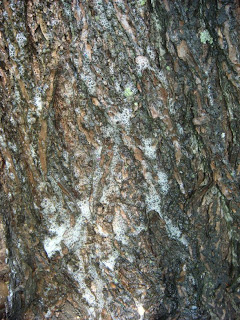Classic blog: Finding wildflowers in spring
 |
| Red trillium at Little River State Park |
Here are some spring
ephemerals to watch for, and suggestions on where to look:
 |
| Trout lily at Niquette Bay State Park |
Hepatica: This tiny, fresh-smelling flower is one of the
very first to appear in the woody areas in spring. Hepatica grows low to the
ground and can be pink, white, purple, or blue. If you look closely, you will
see that hepatica is furry! These tiny hairs on the stem are another protection
from early spring temperatures. You can find hepatica at Niquette Bay.
Trout lily: This is a common spring ephemeral, and can be
found in large colonies. The name comes from the coloring of the yellow flower
and brown speckled leaves. Try to find trout lily at Coolidge State Park.
Trillium: Trillium is a spring ephemeral that can tolerate
extreme cold, and comes in many colors, including red and white. Unlike
hepatica's pleasant smell, red trillium has an unpleasant odor, which explains
why it's sometimes called "stinking Benjamin". Look for trillium in
Gifford Woods State Park.
 |
| Hepatica in bloom |
Dutchman's breeches: Common to a large part of the eastern
U.S, this distinctive flower likes well-drained soil and often grows along
limestone ledges. Bees especially like dutchman's breeches, and in fact the
feeling is mutual. The flower heavily relies on bumblebees for pollination,
since the bee's long legs and snout are strong enough to get inside the
"pants" of the Dutchman. Look for this one at Niquette Bay.
Places to go:
 |
| Dutchman's breeches at Niquette Bay State Park |
Common sense warnings:
- Stay on paths and try not to disturb plant colonies.
- Clean up after your pet. The nitrogen and phosphorus in dog poop doesn't "fertilize" fragile plants- it can kill them!
- Don't pick flowers. Not only is it illegal to do so State Parks, it destroys the seeds that would cause the plans to grow year after year.
- For extra credit, keep one eye out for invasive plant species such as buckthorn, barberry and shrub honeysuckle. that also bloom early, but unlike spring ephemerals take a full season to complete their life cycle.

.jpg)
.jpg)
Comments
Post a Comment
Feel free to let us know what you think.